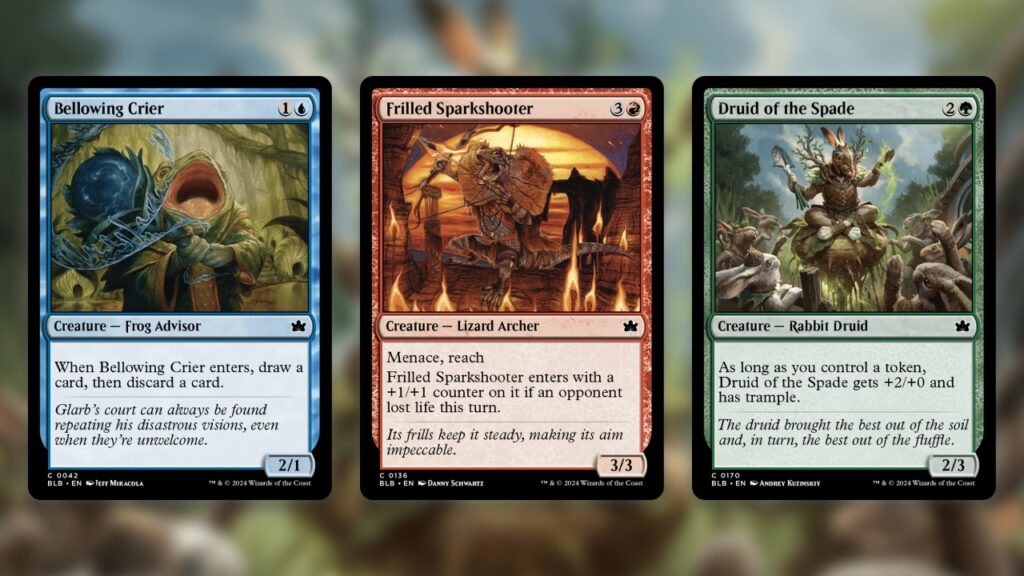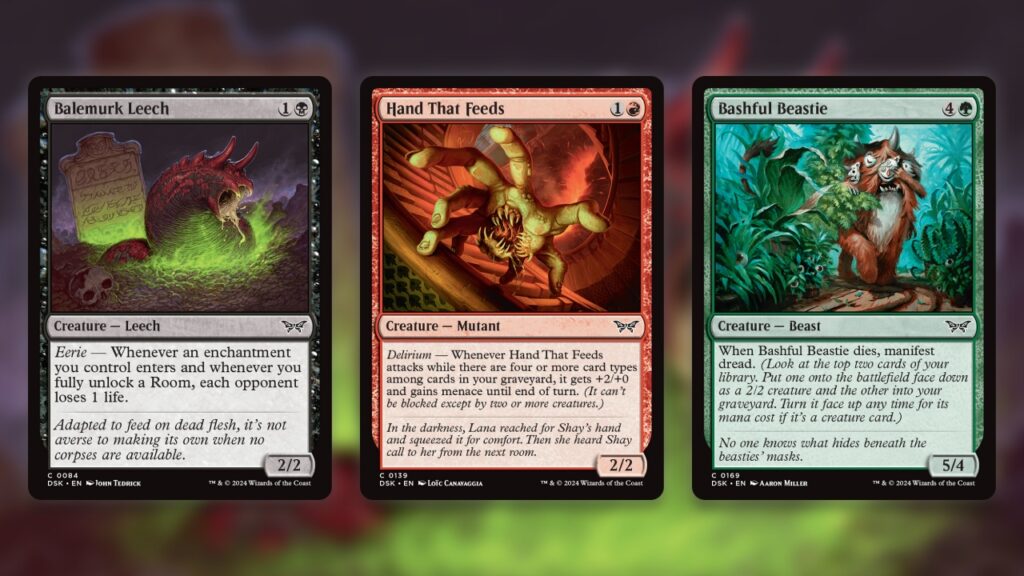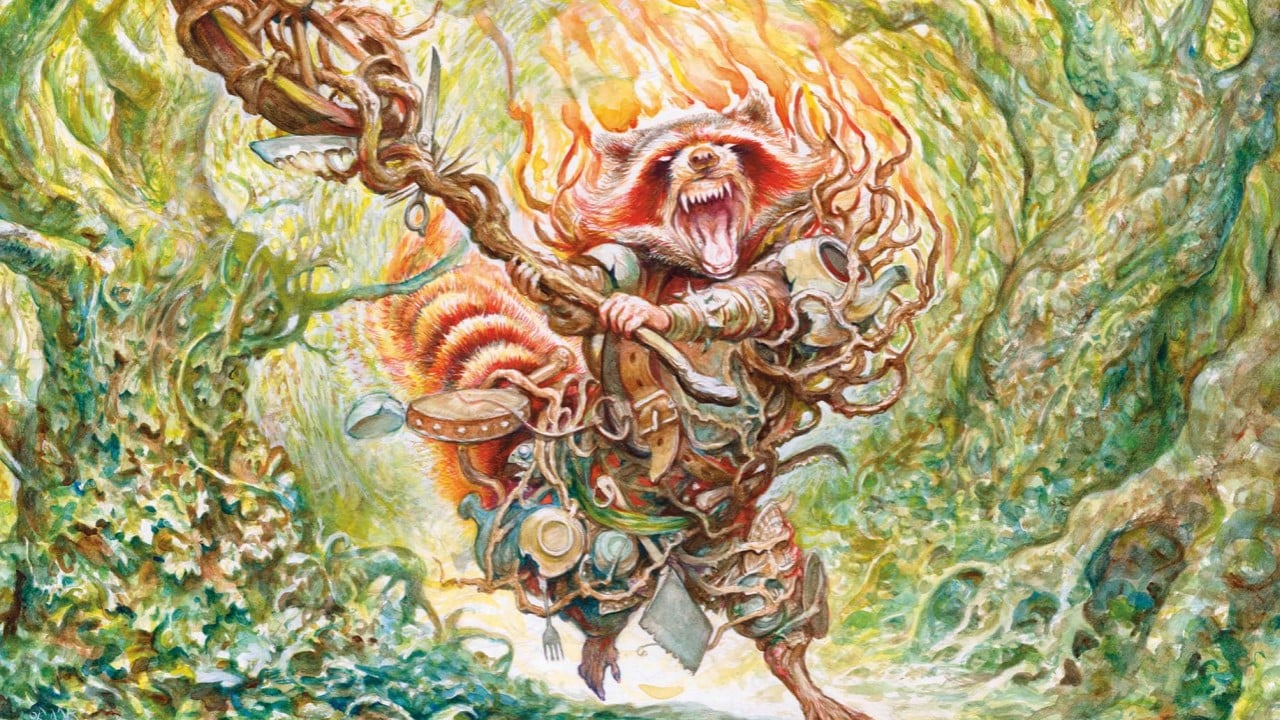Magic’s Limited formats are truly some of its greatest assets. Circumventing the high financial barrier to entry the game’s constructed formats possess, Limited puts everyone on a level playing ground. You can’t pay to pick more cards in Draft or add more packs in Sealed. As the great equalizers of the Magic world, these formats are incredibly important. With the release of Duskmourn players have been comparing its Limited environment to that of Bloomburrow, and examining the strengths and weaknesses of each. Amid this discussion, an interesting picture of the current MTG player base has taken shape.
Bloomburrow: Back To Basics

This discussion was sparked by a post in the r/MagicTCG subreddit by morningwoodelf69. In it, they note that playing Duskmourn Limited after Bloomburrow was like “being awoken from a coma.” Specifically, they found Duskmourn to be much more complex and engaging than Bloomburrow.
“I can’t get over how much better designed Duskmourn is. It’s a fantastic, deep set with many combinations and strategies, even multiple options for the same color pair. It’s amazing how much better it is, with Bloomburrow’s primitivity reminding me of the early years of Hearthstone.”
morningwoodelf69
It turns out that this was an opinion shared by quite a few Magic players. Kitchen-Monitor8051 put it succinctly: “BLB limited was one of the least inspired, paint-by-numbers formats in recent memory.” Titronnica got a little more specific: “Bloomburrow is a great set for constructed, but awful for draft/limited. The set is heavily reliant on tribal synergies and consistencies across colors.”
This really gets to the heart of one of the recurring issues players had with Bloomburrow Limited: its linearity. Because of the ten animal factions in the set, Drafts often pick themselves once you’ve chosen a couple of cards in the same archetype. There’s not much overlap between the archetypes, either. This makes Bloomburrow Limited a bit of a feast-or-famine format, which doesn’t translate to a great experience.
“The thing is in BLB every archetype is so narrow that you can miss key cards that make them work even if you are in the “correct” open lane.”
BobbyBruceBanner
Of course, Bloomburrow wasn’t without its defenders. Many pointed to the fact that Bloomburrow was clearly designed as a beginner-friendly set to justify its linearity. “Bloomburrow was definitely aimed at new and incoming players.” said Tasteoftacos in the thread, “Standard had a big rotation as well as another outlet for players to discover.”
This is a valid and important point. As we’ll get into later, 2024 is a huge year for the new Magic player experience. Bloomburrow is probably the 2024 set with the broadest appeal overall. A simple, linear approach actually makes a lot of sense for a product like this, even if it’s not the best to actually play.
Duskmourn: Digging In Deeper

Duskmourn Limited is a completely different beast when compared to Bloomburrow. Where Bloomburrow’s mechanics were largely simple, self-contained ones like Offspring and Gift, Duskmourn’s form an interlocking web that’s much more complex. Eerie cares about enchantments, which help fuel Delirium, which is further bolstered by Manifest Dread. All of this synergy allows for much more flexible deck building.
The creator of the thread in question clearly loved the set, but so did many others in the comments. onnthwanno noted that “Duskmourn is easily my favorite draft experience in the past five years.” Sir_Encerwal echoed that sentiment: “Duskmourn is probably my favorite standard legal limited environment this year with OTJ being a close second.”
Duskmourn had its detractors as well, of course. Strangely, many in the thread criticized the set more on aesthetic grounds than on actual gameplay. Those complaints came alongside genuine critique as well, however. While many enjoyed how synergistic Duskmourn’s mechanics were, others bemoaned the power weighting of its cards, which seemed to lean towards uncommons and rares rather than commons.
“In order for anything to synergize you need good uncommons and rares, whereas with Bloomburrow you could craft a solid deck even if you missed out on bomb rares or uncommons.”
kbb5508
Top-heavy power weighting is never great for a Limited environment. On top of this, some players noted that Duskmourn was linear in its own way. Anhavva put it succinctly: “The best cards in Duskmourn are always plays. And the fixing is good enough to always plays them.” While not great for Sealed, a setup like this does work better for Draft than Bloomburrow’s.
The Ideal Balance?

The Limited environments of both Bloomburrow and Duskmourn have their pros and cons, then, that much the thread made clear. Which is the best direction for Magic to take going forward, though? The thread’s creator admitted that “Bloomburrow had me worried about the direction the game was heading” in the original post, and they clearly weren’t alone. Was Bloomburrow a misstep that Duskmourn corrected? Honestly, I don’t think so.
As mentioned above, Bloomburrow is a set that prioritizes the new player experience. The two-color animal archetypes are easy to draft and build around, which helps new players ease into deckbuilding. Their mechanics being self-contained also avoids scaring players away with overly complex interactions.
Duskmourn, on the other hand, is very complex. You can build multiple decks in each color combination, all of them viable. Figuring out edge-case interactions between mechanics will get you ahead, and existing game knowledge counts for a lot more here than in Bloomburrow. This is a Limited environment for the enfranchised players; those who want a bit more to chew on and relish.
Magic is a game with many different audiences, both casual and competitive. To my eyes, the one-two, punch of Bloomburrow into Duskmourn doesn’t represent two possible branching paths for the game, but rather one path that fluctuates as needed. Sure Duskmourn is complex, but we’re heading into Foundations next, which will, presumably, be new-player friendly just like Bloomburrow.
Jumping between these extremes is how Magic will survive as a game going forward. Some players will always be left a bit cold, but as long as there’s something around the corner for them it’s not a huge deal. Better to make art that some people love than that everyone likes, after all.
